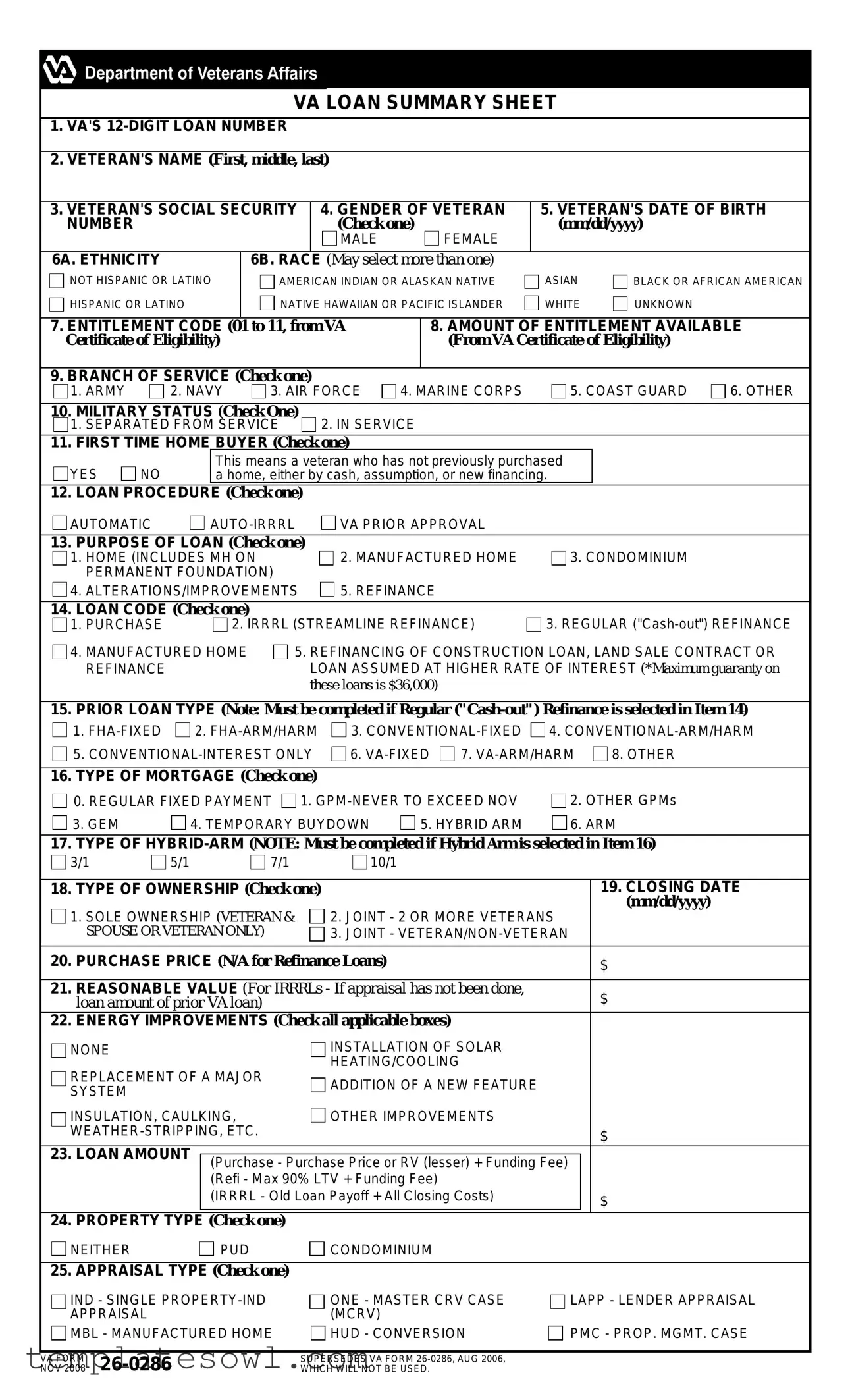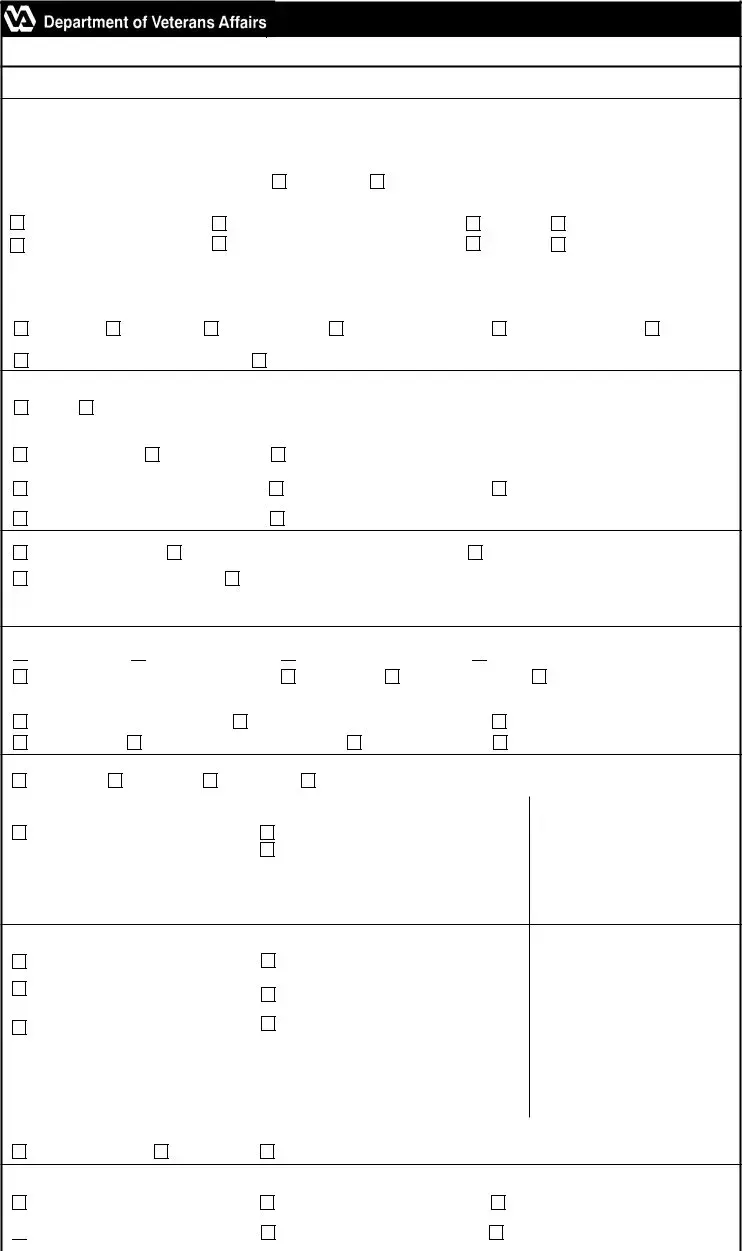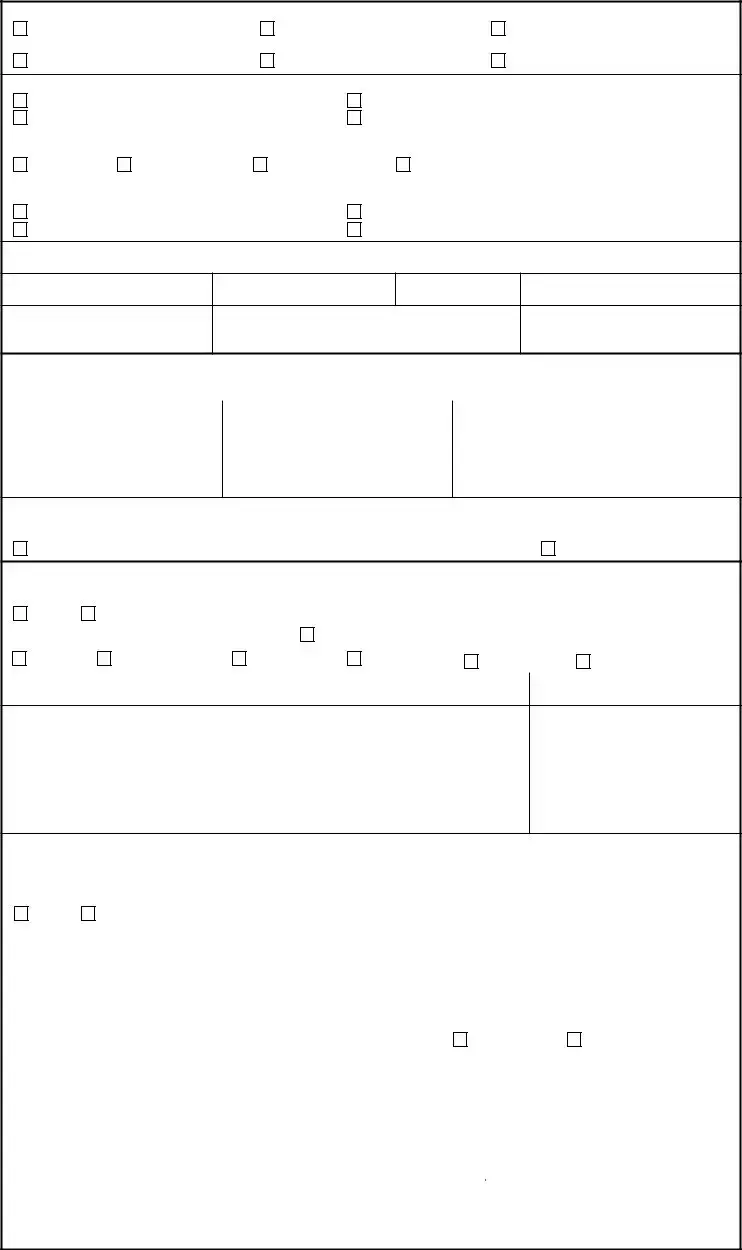What is the purpose of the Loan Summary Sheet form?
The Loan Summary Sheet serves to collect essential information related to a veteran's application for a VA loan. It includes personal details about the veteran, information about their entitlement, the loan amount, type of property, and other financial specifics. This form is crucial for lenders to assess the eligibility and determine the best loan options available for veterans.
What information is required from the veteran on the Loan Summary Sheet?
The form requires various personal and financial details, including the veteran's 12-digit loan number, name, social security number, gender, and date of birth. Additionally, it asks for information such as ethnicity, race, branch of service, military status, loan purpose, and details about the property type and value.
How does the veteran's entitlement code factor into the loan process?
The entitlement code reflects the veteran's eligibility for a VA loan, indicating the amount of guaranty the VA provides for the loan. It ranges from 01 to 11, which helps lenders determine the maximum loan amount a veteran can obtain based on their eligibility status. This code is crucial for borrowers as it affects potential down payment requirements and loan limits.
What does "first-time home buyer" mean in this context?
This designation indicates whether the veteran is buying a home for the first time. If a veteran checks "YES," this means they have not previously purchased a home through cash transactions, loan assumptions, or new financing. This status may influence loan options and benefits offered, ensuring the veteran receives targeted assistance during the buying process.
What types of loans does the Loan Summary Sheet cover?
The form accommodates various loan types, including standard purchases, streamline refinances, cash-out refinances, and loans specific to manufactured homes or condominiums. Lenders need to clarify the loan's purpose to tailor the financing options appropriately, whether it is to purchase a home or refinance an existing loan.
What is the significance of the military status section?
The military status section indicates whether the veteran is currently in service or has been separated from service. This distinction is vital for the lender, as it can impact the eligibility for certain types of VA loans and the terms offered. Active-duty service members might have different loan conditions compared to veterans who are no longer in active service.
How are loan amounts calculated on the Loan Summary Sheet?
The loan amount is determined based on the lesser of the purchase price or the reasonable value of the property plus any applicable funding fee. For refinancing, the maximum loan-to-value ratio (LTV) is capped at 90%. The calculations ensure that the loan provided is appropriate and manageable based on the veteran's financial situation.
What information about the property does the Loan Summary Sheet capture?
The form gathers comprehensive details about the property, including its type, address, closing date, energy-efficient improvements, and the number of units. This information helps lenders assess the property’s value and suitability for VA financing and ensures compliance with the requirements under VA regulations.
Why is credit score included in the Loan Summary Sheet?
The credit score is a crucial element of the application process as it helps lenders evaluate the veteran's creditworthiness and ability to repay the loan. A median credit score provides a snapshot of the veteran's financial health, influencing loan terms, interest rates, and potential approvals.
Are there any costs associated with the loan that must be disclosed?
Yes, the Loan Summary Sheet includes a section for detailing discount points charged and how much the veteran is paying. These costs can affect the overall expense of obtaining the loan. Transparency regarding these costs ensures that veterans are fully informed about their financial commitments before proceeding with the loan application.


 1.
1.  2.
2.  3.
3.  4.
4.  MBL - MANUFACTURED HOME
MBL - MANUFACTURED HOME